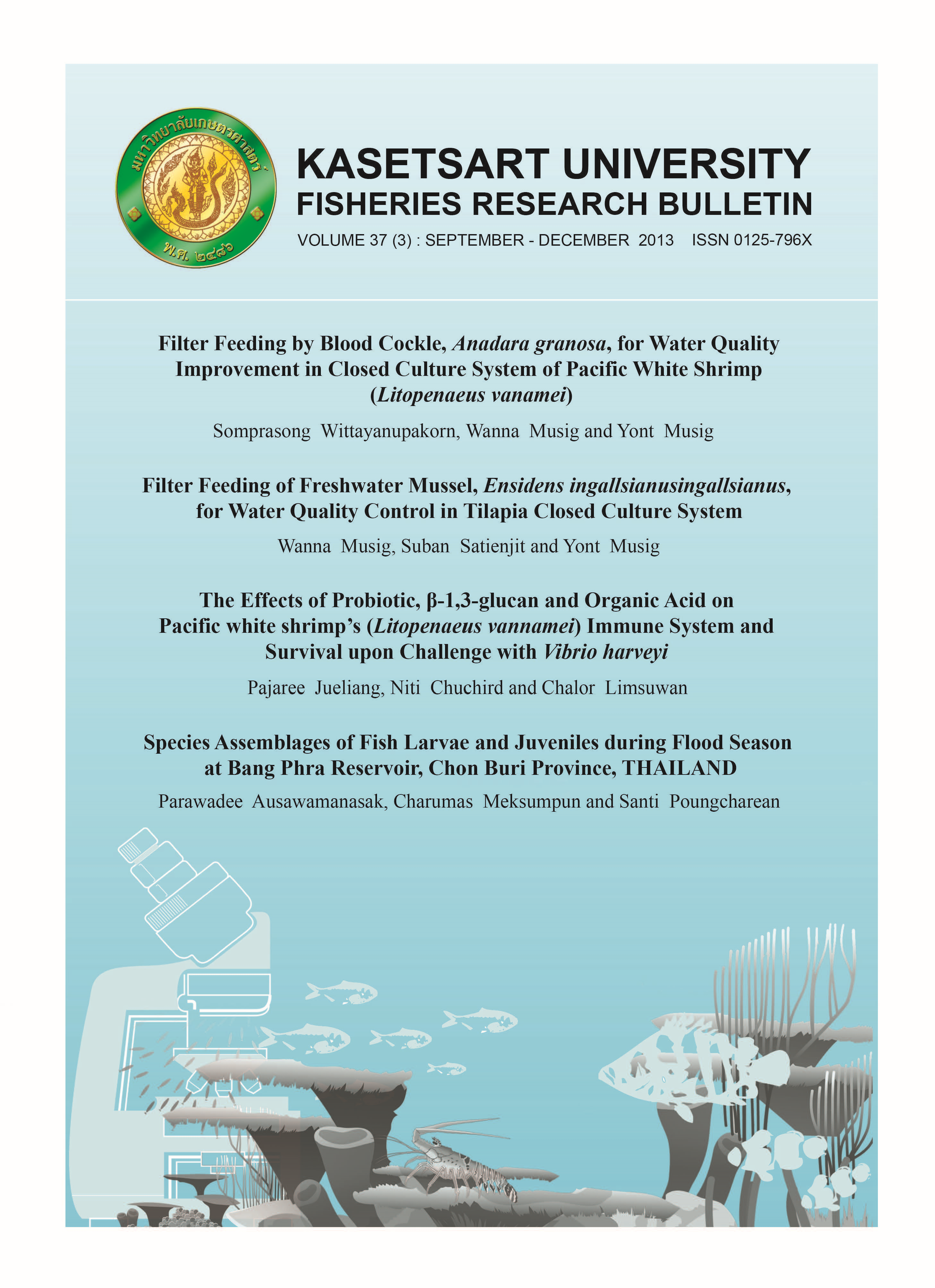Filter Feeding by Blood Cockle, Anadara granosa, for Water Quality Improvement in Closed Culture System of Pacific White Shrimp (Litopenaeus vanamei)
Main Article Content
Abstract
The possibility of using blood cockle as a means to improve water quality in Pacific white shrimp culture system through the removal of particulate matter from water was investigated. Juvenile Pacific white shrimp (Litopenaeus vanamei) was cultured with and without blood cockle, Anadara granosa, in an outdoor closed culture system (without water exchange) for 2 months. Results of this experiment showed thatblood cockle is very effective in removing particulate matter, particulate nitrogen, phytoplankton and particulate phosphorus from Pacific white shrimp culture water. Co-culture of blood cockle with Pacific white shrimp resulted in decreasing turbidity by 59.0%, total particulate matter by 60.0%, particulate organic matter by 66.0%, chlorophyll a by 85.2%, particulate nitrogen by 75.0%, and particulate phosphorus by 55.4%. Average values of turbidity, chlorophyll a, total particulate matter, particulate organic matter, particulate nitrogen, particulate phosphorus and total ammonia nitrogen were 5.0 NTU, 49.6 µg/L, 12.4 mg/L, 8.1 mg/L, 0.595 mg/L, 0.100 mg/L, and 0.354 mg/L, respectively, in Pacific white shrimp and blood cockle treatment compared to average values of 12.2 NTU, 335.2 µg/L, 31.0 mg/L, 23.8 mg/L, 2.377 mg/L, 0.224 mg/L, and 0.277 mg/L, respectively, in Pacific white shrimp treatment. Average values of turbidity, chlorophyll a, total particulate matter, particulate organic matter, particulate nitrogen, and particulate phosphorus in Pacific white shrimp and blood cockle treatment were significantly lower (P<0.05) than those of Pacific white shrimp treatment but there was no significant difference (P>0.05) between average value of total ammonia nitrogen, production rate, survival rate and growth rate of Pacific white shrimp of the two treatments.

